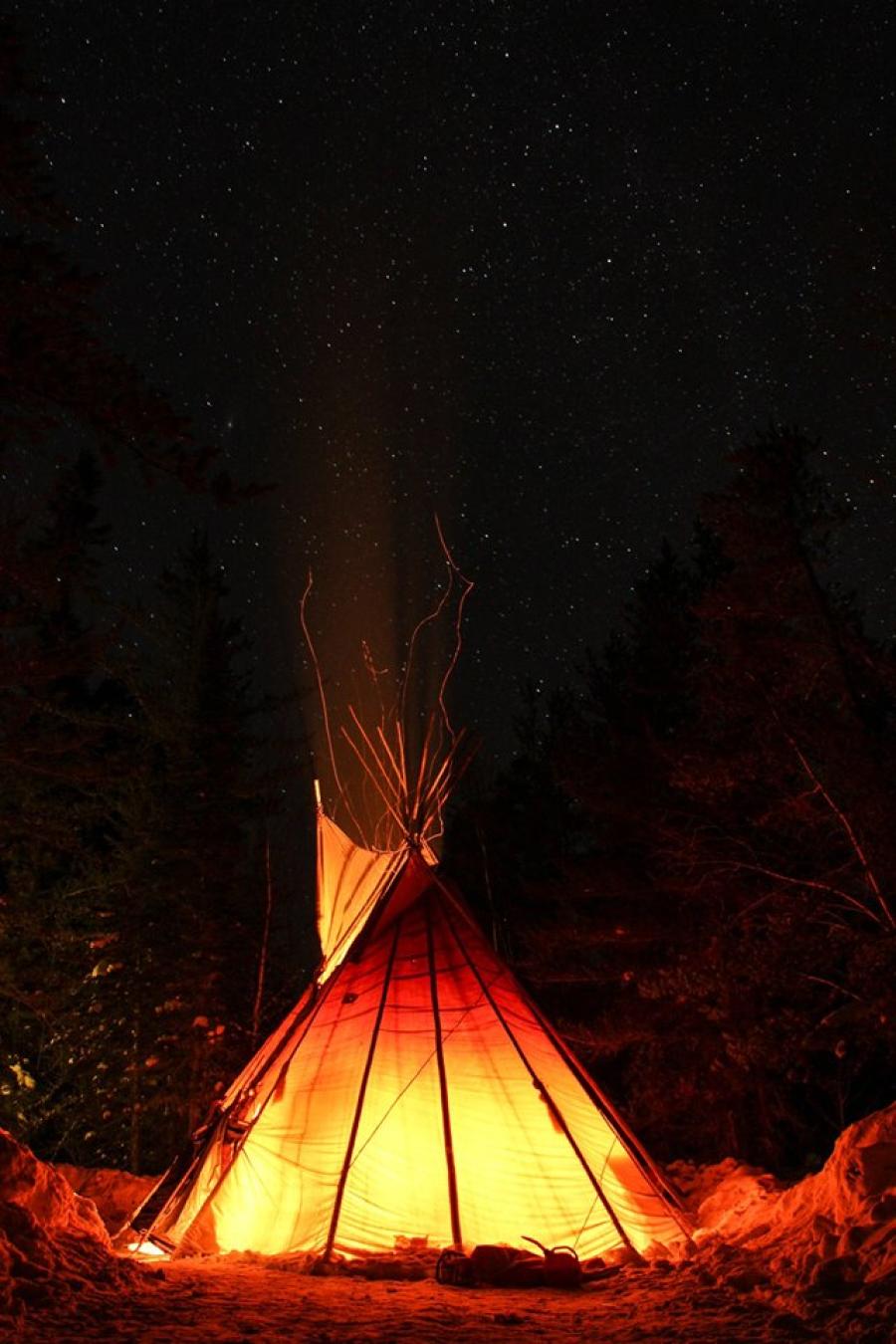Traditional Ecolony
For several years, the James Bay II project, Quebec's plan to dam the Great Whale River, has drawn concern from Canadian and international environmental groups. Now Manitoba and Ontario have designs on other rivers flowing through their provinces into the Hudson and James bays. This new initiative comes in addition to large-scale hydro-electric projects in all three provinces.
In response, Cultural Survival Canada has joined the Hudson Bay-James Bay Bioregion Program, an attempt to stimulate an ecosystem approach to development. Fundamentally, this concept recognizes that everything is connected and that an ecosystem is more than the sum of its components. Since changes affecting one aspect of a system affect the dynamics of the whole system and its constituents, human activities - whether damming rivers, logging forests, or building cities - carry pervasive, diverse, and far-reaching implications.
Besides, Cultural Survival Canada, the participants in the bioregion program are the Canadian Arctic Resources Committee, the Rawson Academy of Aquatic Science, and the Council of the Sanikiluaq. The collaboration stems from the need for a full, informed discussion about the cumulative impacts of development on the region by all affected parties, in particular the Cree and Inuit who live there. The Cree and Inuit people have occupied the Hudson Bay-James Bay bioregion for thousands of years. The Cree occupy the southern part of Manitoba, Ontario, and Northern Quebec as far up as the Great Whale River. Inuit live along the eastern shores of Hudson Bay in the Northwest Territories, Southampton Island, and the Belcher Islands.
The bioregion program has two specific objectives: * to assess the cumulative impact of human activities on the marine and fresh-water ecosystems of the Hudson Bay-James Bay bioregion; * to examine and propose cooperative processes for decision making - among governments, developers, aboriginal peoples, and other stakeholders - that foster sustainable development.
As its contribution, Cultural Survival Canada is contributing to the "Traditional Ecological and Management Systems Study" (TEKMS). TEKMS will bring forth traditional ecological knowledge to assess the cumulative impact of human activities in the Hudson Bay bioregion. This effort grows out of the recognition of indigenous systems as a complementary source to recorded scientific data regarding the environment.
Traditional ecological knowledge refers to the knowledge base that indigenous and other local peoples have acquired over hundreds of years. It includes an intimate knowledge of the environment, a holistic world view that parallels the scientific discipline of ecology, and appropriate technologies for hunting, fishing, agriculture, and forestry.
Indigenous knowledge of how the ecosystem works comes from seeing land, animals, and people as interrelated. As part of their traditional subsistence economy, the Cree hunt migratory birds, as well as moose and other land mammals. They fish the rivers and trap fur-bearing animals such as muskrat and beaver. Traditionally, Inuit have harvested such fish and marine mammals as seals, walrus, and whales. Some Inuit depend heavily on caribou.
TEKMS will take 18 months to complete. It will consist of a series of structured workshops among elders, hunters, and trappers to gather knowledge from communities around the Hudson and James bays. The study aims to provide a systematic way to process this information and will culminate in applying it to assessing the impacts of development.
The first workshop took place in September in the Sanikuluaq community in the Belcher Islands. Leaders from communities around Hudson Bay gathered to express their environmental concerns, develop questions for smaller working groups, and plan strategies for the remainder of the program. For the workshop, Cultural Survival Canada prepared an historical report on past attempts to link traditional ecological knowledge with Western scientific systems.
Sixteen representatives from nine communities participated in the Sanikuluaq meeting. For many, it was the first opportunity to discuss the environmental changes they have noticed with people from other communities around the bay. The delegates were enthusiastic at the possibility of providing a picture of the region's environmental health as seen through the eyes of its native peoples.
Article copyright Cultural Survival, Inc.




